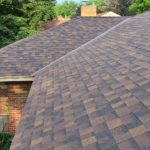The rooftop of a home is consistently exposed to changing weather. Rooftops often have to endure thunderstorms, frigid winters, and the occasional hail storm while keeping the home’s occupants comfortable and safe.
When a roof fails or is damaged, it can no longer serve its purpose and should be replaced. Let’s find out what are some of the signs that indicate roof replacement.
Leaky roof
To determine if your roof needs replacing, you should look for signs which indicate that the integrity of your rooftop has been compromised. Use a flashlight to inspect the ceiling and walls of your attic. If you see mold or moisture on their surfaces, your roof may have a leak.
Roof leaks should be addressed immediately, as water may be able to infiltrate into your attic and damage the insulation or wooden structures there.
There are many ways to fix a leaky roof. However, if the problem occurs repeatedly, your entire rooftop may need replacing.
Old rooftops
Old rooftops are more prone to getting leaks than new ones. If your home was built over two decades ago, its roof may need to be replaced.
Asphalt shingles are believed to last between 20 and 30 years, and may start to show signs of wear and degradation beforehand. Cedar shingles tend to last longer and can survive for 30 to 40 years.
Signs of wear
Shingles tend to curl over time due to weathering. Rooftops with curled shingles are often prone to leaking and should be monitored closely.
It’s possible to replace individual curled shingles on your roof. However, the entire rooftop may need to be replaced within 1 to 5 years following the discovery of a single curled shingle.
Asphalt shingles can also lose their granules over time. These granules are meant to protect the asphalt material from degrading from sun exposure. If your shingles lose a significant percentage of their granules, it could compromise the integrity of your roof.
Shingles can also split due to damage from hail. Impact damage can be identified as sharp splits and cracks on the surface of asphalt shingles.
Cedar shingles tend to naturally crack or split over time due to the expansion and contraction of wood from moisture and drying. If the hairline cracks on a cedar shingle appear to be growing significantly in size, the rooftop may need to be replaced.
Structural integrity issues
If your rooftop is starting to sag, it could point to issues with the roof’s structural integrity. This could pose a danger for people inside the home. You should consider calling an expert to assess the risk of the roof collapsing.
However, a sagging rooftop usually indicates that the roof has been facing issues for a while. When the replacement roof is installed, you should consider monitoring and maintaining it regularly to prevent issues in the future.
If you’re interested in having your roof replaced by experts in Minnesota, get in touch with Northland Home Exteriors.



